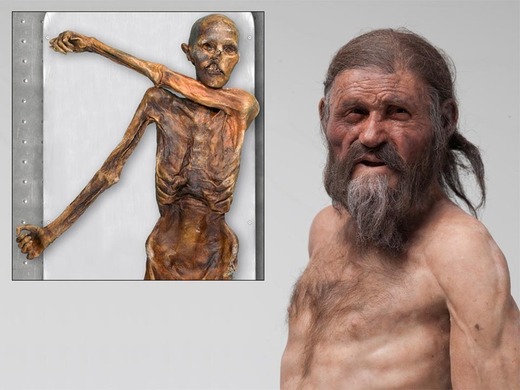The fungal tea tastes vile, and not for the first time he considers dumping it on the last of the morning’s fire. It does seem to be helping the pain in his gut, though, as the medicine man said it would, so he gulps the last of it with a grimace. Around him the younger members of the raiding party are packing up the camp, making ready to head higher up the mountain.
He checks the head of his axe, out of habit, making sure the copper blade is still sharp and securely fixed. Not that he had much doubt– he had shaped it himself, and it would take more than chopping wood for last night’s fire to blunt it. A lot of work went into that axe, and a lot remained to be done with it.
The younger men have mostly finished their preparations, and are beginning to look at him expectantly, though they have the sense to try to be subtle. He pushes himself to his feet, walks to the fire, and pokes through it with a stick, looking for suitable embers. Finding a few, he picks them up gingerly (long experience helps him avoid burning his hand) and drops them in the leaf-lined container at his belt. With care, they should remain hot enough to kindle a new fire later that night; spring is well advanced, but up in the mountains the nights are still cold.
Standing, he stamps his feet to settle them in his shoes, then kicks dirt over the rest of the fire. He looks at the rest of the party. “All right, boys. Let’s get climbing.” A good day of walking should get them up and over the ridge, and into the next valley, and then, well, they’ll see what there is to be seen…
In 1991, two German hikers in Italy stumbled across a corpse in an icy gully. The partially exposed body turned out to be the mummified body of a man who died some 5,000 years earlier, and was preserved in ice. Nicknamed “Ötzi” after his discovery in the Ötzal Alps, this body (and his tools and clothing) provides some of the best information we have about daily life in Europe around 3,000 BCE. It’s also indicative of the pervasive impact of science.
The most obvious scientific product among Ötzi’s possessions is his copper axe, an extremely high-tech item for the time, and probably marked him as a high-status individual. The head alone requires a large body of knowledge: in order to make it, Ötzi’s people needed to gather ore-bearing rocks, heat them in a fire to separate out the copper and melt it, then cast the head in a stone or clay mold. No step in this process is possible without some science. Somebody had to determine which types of rocks contain copper suitable for smelting. The temperatures needed to melt the copper probably require a charcoal fire and bellows, which themselves would be the result of much experimentation and development. Soot in his lungs and arsenic in his hair indicates that Ötzi was probably personally involved in the copper industry of his day.
Most of his other possessions also speak to generations of scientific thinking. He carried a variety of tools, including tools for making other tools, and a set of supplies that included tinder and a bark container used to transport embers for fire-lighting. He also had a “medical kit” containing some fungus known to have medicinal properties, including oils that are effective against parasites found in his intestines. All of this indicates a culture shaped by science: somebody had worked out, by trial and error, a wide variety of technologies for making a better life in the mountains of Europe, and shared it widely.
(Examination of his body also indicates that Ötzi died from an arrow wound in the shoulder, and other wounds indicate he’d been involved in skirmishing. Thus, the fictional raiding party of the little story above…)
There’s a modern tendency to produce thinkpieces about how technology has transformed our lives, generally with a “kids these days” slant about how we’ve become alienated from the proper state of nature, etc. But Ötzi and his belongings provide an important counterpoint to this: human lives have been shaped by science and technology for thousands of years. We don’t think of copper axes and birch-bark containers as examples of science and technology, because they’ve been with us for so long nobody has any clue who first invented them. They’ve been part of the background for so long they seem like a bit of the environment that newer technologies are alienating us from.
Copper axes and fungal medicines are human inventions, though, created through the same process of investigation and discovery, trial and error that has brought us iPhones and antibiotics. Developing tools that set us apart from nature is what we do as a species, dating back thousands of years. Thinking scientifically isn’t alienating, it’s an essential part of what it means to be human.
————
(Part of a series promoting Eureka: Discovering Your Inner Scientist, available from Amazon, Barnes and Noble, IndieBound, Powell’s, and anywhere else books are sold.)
(Early drafts of the introduction to Eureka had a big section on Ötzi, but it ended up being too long and academic-sounding, in contrast to the rest of the book. So that model of the introduction was scrapped; I still love the story, though, and am happy for the chance to recycle some of it.)
(Featured image from DOGOnews)

“…human lives have been shaped by science and technology for thousands of years”
The truth!
Why is there a picture of Willie Nelson on your blog?